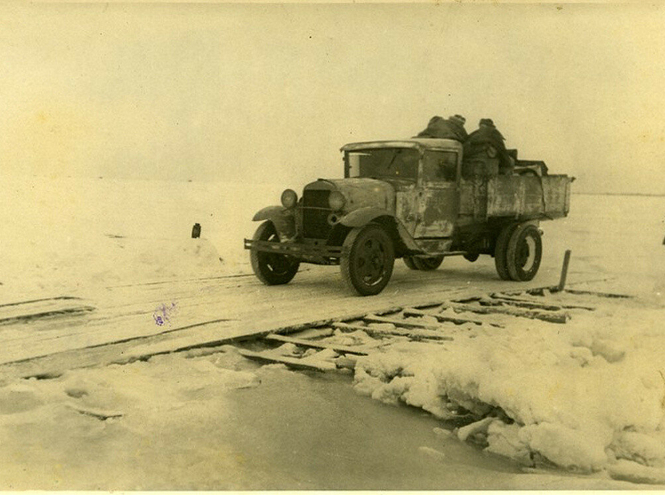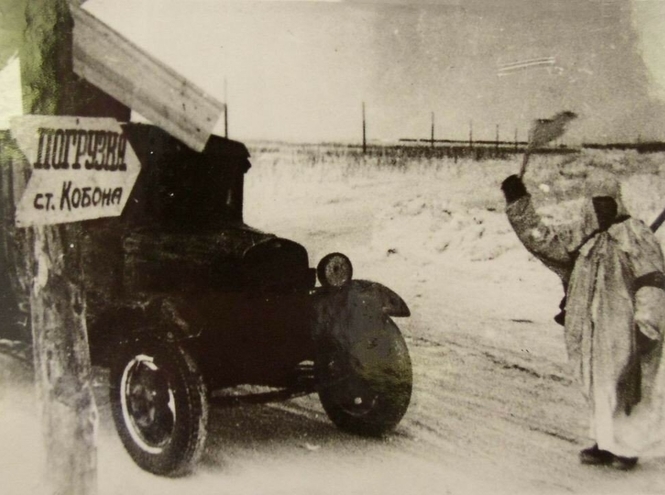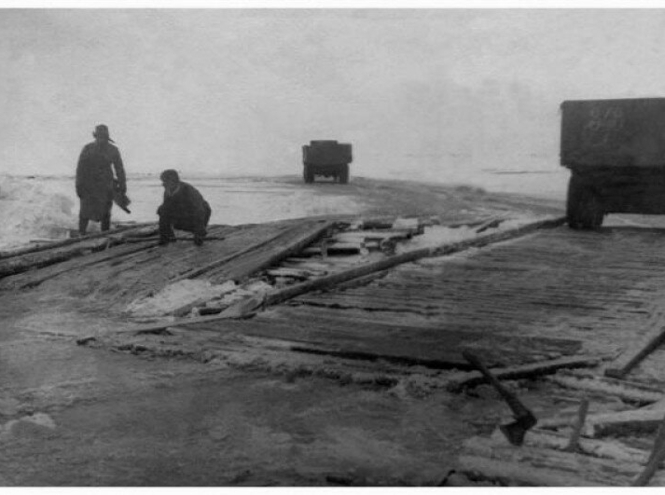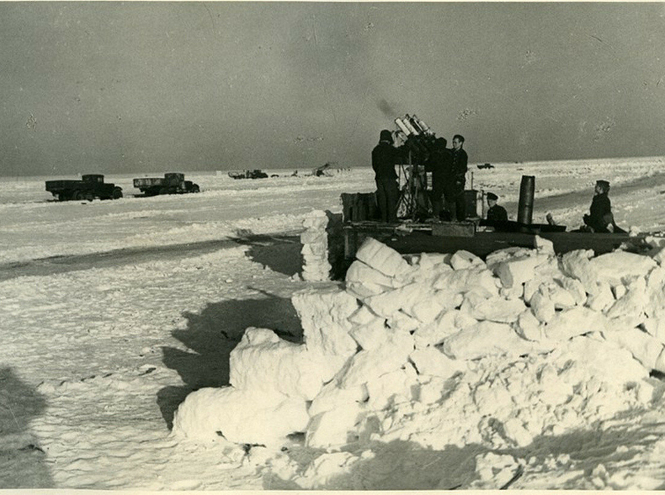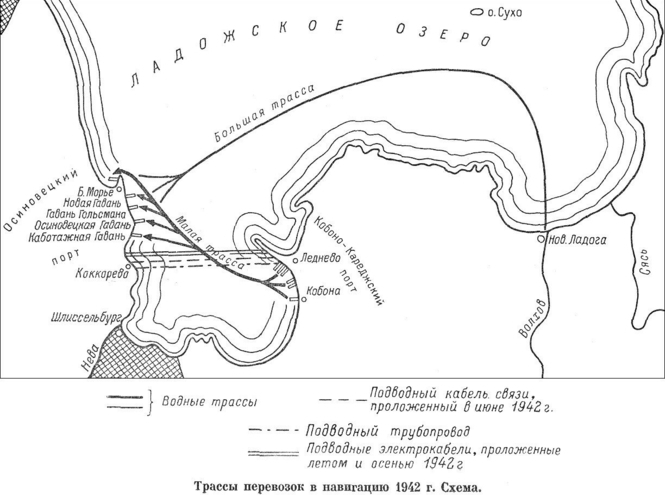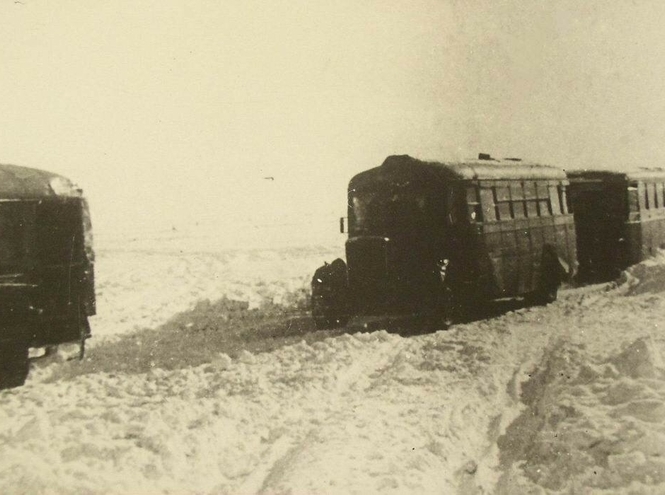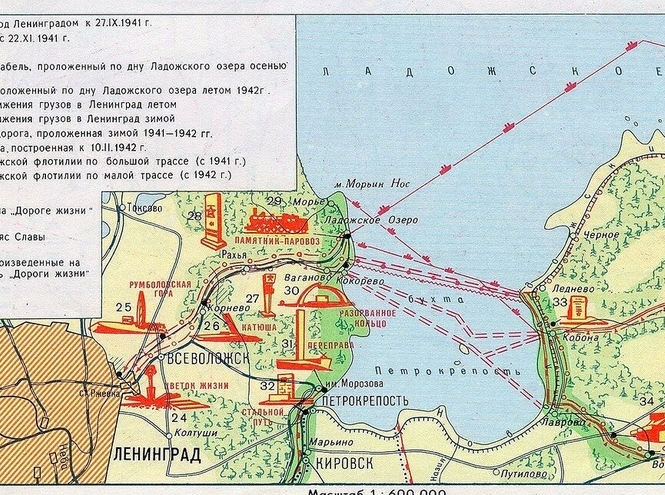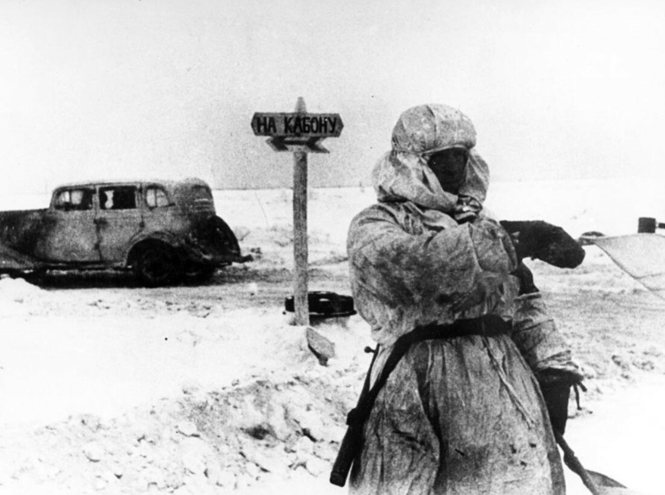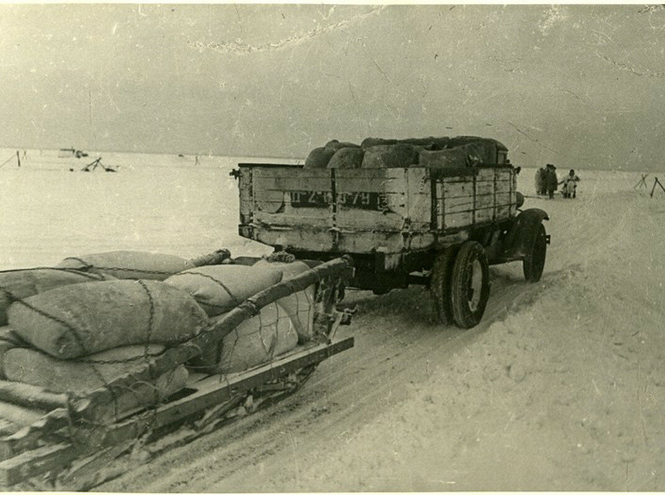The road of life is 80 years old
These days we remember the events of 80 years ago, something that will forever remain in the memory not only of hereditary Leningraders, but also in the heart of everyone who knows the truth about the Great Patriotic War.
On November 22nd, 1941, the first convoy of the 389th separate automobile battalion of Captain Vasily Porchunov began moving along the Road of Life.
The Road of Life was a single communication, which included water, ice, and air routes through Lake Ladoga, as well as railway and highway roads connecting Leningrad with Ladoga, and Ladoga with the whole country. And the main component of this complex was Ladoga.
The severe frosts that hit Leningrad and the region in November 1941 allowed the city, deprived of all communications, to lay a saving road connecting it with the territory unoccupied by the Nazis. On November 12th, hydrographers of the Baltic Fleet came out on the thin Ladoga ice to investigate the rate of freezing of the ice cover between the Leningrad coast and the Mainland.
From November 15th to November 19th, 12 groups conducted a survey of the established ice. On November 19th, the obtained results were reported to the headquarters of the Leningrad Front, and soon the commander, Lieutenant General Mikhail Khozin, signed an order "On the organization of a tractor road through Lake Ladoga."
When the threat of complete encirclement loomed over Leningrad, food turned out to be catastrophically scarce. In fact, the city has always been supplied "from the wheels", and the Badayev warehouses with food burned down on September 8th, 1941, the day the blockade began. Then the attention of the leadership of all ranks was turned to Ladoga.
The first military navigation of 1941 for the Ladoga Flotilla ended on November 29th. Even before that, ships had difficulty making their way through the ice. From November 20th, 1941, 250 grams of bread per day were issued on work cards, and 125 grams for the rest. A fighter on the frontline was supposed to have 500 grams a day, and in the rear units — 300. In December, stocks of cereals and vegetables ran out.
"Bread came to us on the way of life,
Dear friendship of many to many.
They don 't know on earth yet
Scarier and more joyful roads!".
Olga Bergholz dedicated these lines to the road through Ladoga. Winters are fierce on Ladoga. Constant winds drive snow across the open space, laying snowdrifts that the car cannot overcome (mostly there were ZIS, the legendary lorries). January 1942 on Ladoga turned out to be exceptionally severe: wind 9-12 points, blizzard, thirty-degree frost. The raging elements reshaped the track in their own way. And then the entire personnel of the Road of Life was alerted. Everyone, despite their position, took shovels, they were an indispensable attribute of equipment. This was the order of the head of the road, Major General of the Quartermaster Service Afanasy Shilov and Brigade Commissar Joseph Shikin. Without the knowledge of the border guards, no one could appear on the ice. Combat security detachments controlled the area day and night, skiing 10-15 kilometers from the coast.
The Hitlerite command well understood the importance of the highway, its significance for Leningrad and the front troops, and immediately aimed significant aviation forces at the road, and after a while they began to shell it from Shlisselburg. "Junkers", "Heinkels", "Messerschmitts", "Dorniers" bombed the highway day and night with cannons and machine guns, hunted not only for columns, but also for individual cars. During the period of operation of the road over Ladoga, the defenders of Leningrad shot down over 500 enemy aircraft.
During the five months of 1941-1942, according to some estimates, two thousand wagons of various cargoes, 85 tanks, a large number of other military equipment were transported to the besieged city, and 3,700 wagons of industrial equipment, works of art, 514 thousand residents, 35 thousand wounded were evacuated from the city. In mid-March 1942, the staff of our university (then LIIS) and their families were evacuated. Traffic on the highway stopped on April 21, 1942. The issue of the surrender of the city has already been removed from the agenda.
Here is what Georgy Nikolaevich Fursey, an honorary professor of SPbSUT who recently left us, recalled about the evacuation: "I was evacuated along Lake Ladoga when the children were taken out. I was in such a state that I would not have survived, I would not have survived hunger. My legs were swollen, and the vitamin deficiency was terrible – everything that usually happens when there is no food.
I remember the way. We drove at night with the lights out, because they bombed continuously and fired. We were traveling in a van covered with plywood, and at night this van crashed into the wing of a downed plane. The plywood top of our van was blown off. Then it was very cold. My legs were so cold that they almost amputated them when I arrived.
People behaved courageously… I don't know how to convey it. I remember that during the war there was no malice among people. They helped each other at every step."
Each flight was difficult, dangerous and necessary. Here are the memoirs of one of the participants in those events — Lieutenant General Andrei Petrovich Kozlov: "On May 1, 1942, every Leningrader received a half-onion. And no one then knew the background of this issue. And she deserves to be told about her.
Waves rolled over the ice one after another. The water layer exceeded forty centimeters. The bravest Ladoga drivers no longer risked going on a flight that could be the last. At 12 o'clock on April 21, 1942, the ice track, which had served Leningrad faithfully for five months, was closed. And the next day, Zhdanov called Shikin. On the eastern shore of Ladoga there were sixty-five tons of onions, badly needed by the Leningraders who survived the heavy blockade winter. A member of the Military Council asked to transport this priceless cargo to the city.
The news of Zhdanov's request spread like lightning. Work began to boil. Everyone who worked on the Road of Life and cared about the common cause as their own, was looking for the best solution to an exorbitantly difficult task.
There was already open water near the shore. We decided to throw a wooden deck to the edge of the ice. Shikin was one of the first to cross the water-filled ice. One of the commanders tried to dissuade him, but the brigade commissar looked at him so that he immediately stopped.
At first, bags of onions were carried on cars, from which the doors were removed so that you could jump out of the cab in case it fell through the ice, then on a sled, and at the end they were carried on their shoulders up to the waist in icy water. Political workers, communists, were leading others away. People should always remember this unprecedented feat of the heroes of Ladoga. It was committed on April 23 and 24, 1942. Shikin returned from the highway when the last bag of onions was delivered to the west bank and sent to Leningrad."
Everyone in our country knew about the importance of the Road of Life in the defense of Leningrad, about the heroism of its personnel. It is necessary that even today the feat of people who survived all the horrors of war should serve as an example of courage and nobility for future generations.
Based on the article by V. Kulinchenko.
 16 april
Foreign students of SPbSUT learned the history of space exploration
16 april
Foreign students of SPbSUT learned the history of space exploration
 15 april
New members of the SPbSUT International Students Community
15 april
New members of the SPbSUT International Students Community
 10 april
Lecture for Vietnamese students
10 april
Lecture for Vietnamese students
 1 april
SPbSUT and Myanmar are developing cooperation
1 april
SPbSUT and Myanmar are developing cooperation
 20 march
SPbSUT – for applicants from Kyrgyzstan
20 march
SPbSUT – for applicants from Kyrgyzstan
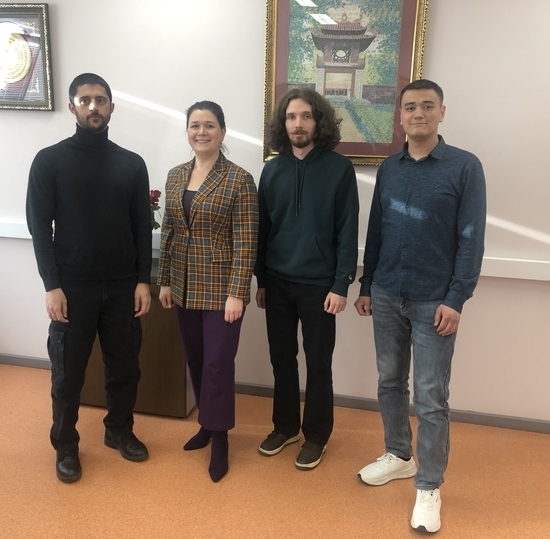 15 march
SPbSUT at the World Youth Festival
15 march
SPbSUT at the World Youth Festival
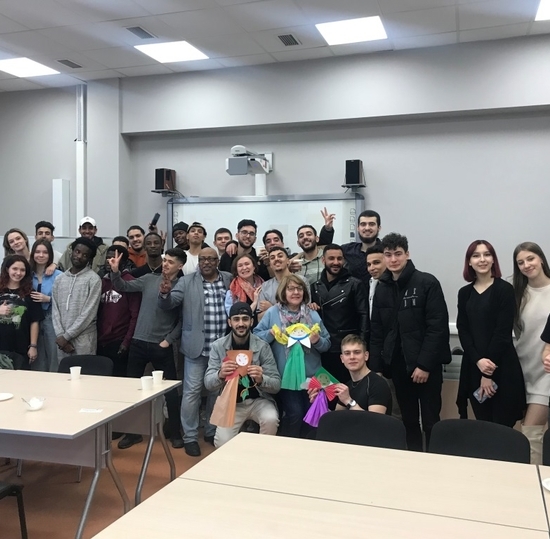 13 march
The International student club "Signal" said goodbye to winter
13 march
The International student club "Signal" said goodbye to winter
 28 february
Foreign students of SPbSUT are among the best in the creative competition
28 february
Foreign students of SPbSUT are among the best in the creative competition
 9 february
Foreign students learned about the culture of Slavic peoples
9 february
Foreign students learned about the culture of Slavic peoples
 1 february
SPbSUT is a participant of the fair of Russian higher education in Sri Lanka
1 february
SPbSUT is a participant of the fair of Russian higher education in Sri Lanka
 26 january
General Chairman of the ICACT-2024 conference welcomes the participants
26 january
General Chairman of the ICACT-2024 conference welcomes the participants
 25 january
International Student Club "Signal" held a new meeting
25 january
International Student Club "Signal" held a new meeting
 19 january
Foreign students got acquainted with St Petersburg
19 january
Foreign students got acquainted with St Petersburg
 26 december
2023 Student Victories
26 december
2023 Student Victories
 22 december
The Day of Winter at SPbSUT
22 december
The Day of Winter at SPbSUT
 22 december
From Algeria to Russia: Friendship Day was held at SPbSUT
22 december
From Algeria to Russia: Friendship Day was held at SPbSUT
 27 november
Foreign students of Preparatory Course get acquainted with SPbSUT and St Petersburg
27 november
Foreign students of Preparatory Course get acquainted with SPbSUT and St Petersburg
 15 november
International Festival of National Cultures
15 november
International Festival of National Cultures
 23 october
The best foreign students were awarded at SPbSUT
23 october
The best foreign students were awarded at SPbSUT
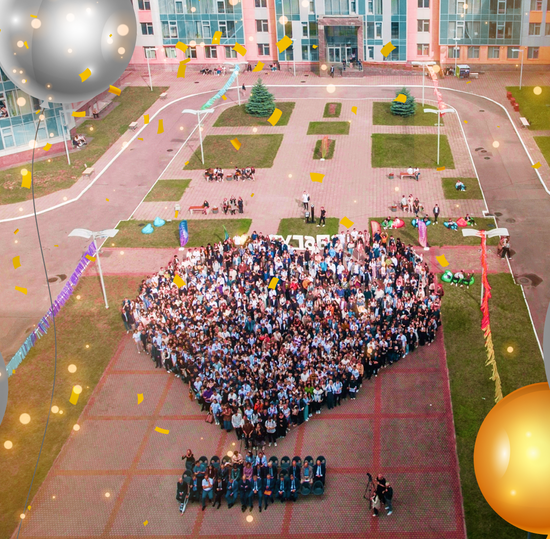 13 october
SPbSUT – 93! Congratulations from Rector Ruslan Kirichek
13 october
SPbSUT – 93! Congratulations from Rector Ruslan Kirichek





